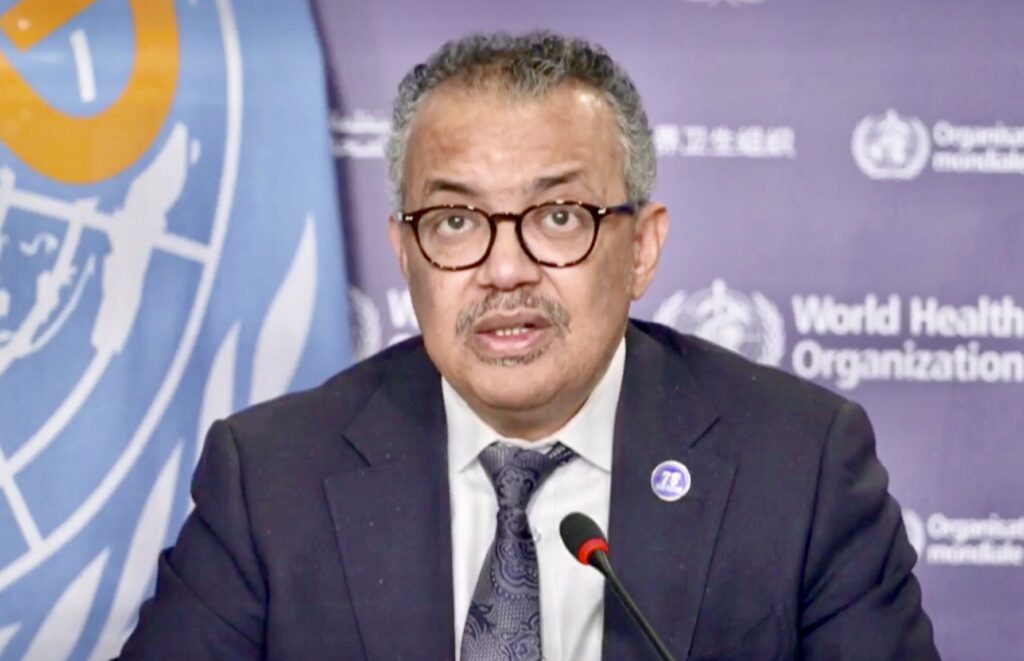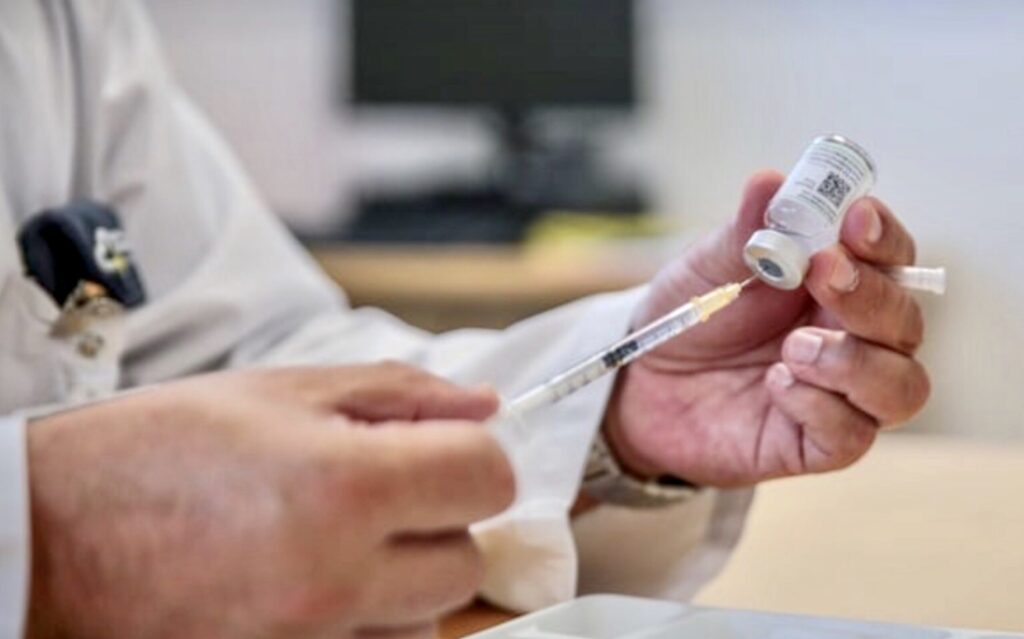By Evangeline T. Capuno
“Thanks to vaccines, smallpox has been eradicated, polio is on the brink, and many once-feared diseases can now be easily prevented, including measles, cervical cancer, yellow fever, pneumonia and diarrhea,” said Dr. Tedros Ghebreyesus, director-general of the World Health Organization (WHO).
“Today, 84% of the world’s children have received three doses of the vaccine against diphtheria, tetanus and pertussis – which is used as a marker of global vaccine coverage,” he further stated. “But only fifty years ago, in 1974, fewer than 5% of infants globally were vaccinated.”
A landmark study, published by The Lancet, reveals that global immunization efforts have saved an estimated 154 million lives – or the equivalent of 6 lives every minute of every year – over the past 50 years. The vast majority of lives saved – 101 million – were those of infants.”
The study, led by the United Nations health agency, shows that immunization is the single greatest contribution of any health intervention to ensuring babies not only see their first birthdays but continue leading healthy lives into adulthood.
“Vaccines are among the most powerful inventions in history, making once-feared diseases preventable,” said Dr. Tedros.
Of the vaccines included in the study, the measles vaccination had the most significant impact on reducing infant mortality, accounting for 60% of the lives saved due to immunization. This vaccine will likely remain the top contributor to preventing deaths in the future.
Over the past 50 years, vaccination against 14 diseases (diphtheria, Hemophilus influenzae type B, hepatitis B, Japanese encephalitis, measles, meningitis A, pertussis, invasive pneumococcal disease, polio, rotavirus, rubella, tetanus, tuberculosis, and yellow fever) has directly contributed to reducing infant deaths by 40% globally.
In the Philippines, the Department of Health (DOH) is urging all parents to bring their infants and kids to health centers to get free vaccination shots that will protect them from acquiring life-threatening diseases like chickenpox, diphtheria, hepatitis A, hepatitis B, human papillomavirus, influenza, Japanese encephalitis, measles, mumps, pertussis, pneumococcal infections, polio, rotavirus infections, rubella, and tetanus.
“Vaccinations prevent serious or sometimes fatal diseases,” pointed out Dr. Beverly Ho, director of DOH’s Health Promotion Bureau, adding that it is critical to complete all childhood immunizations.

“If the baby misses an immunization,” the health official explained, “he or she is at risk of vaccine preventable diseases. These diseases have long-term effects such as compromised immunity making them susceptible to serious illness as they grow up.”
An unvaccinated baby is also a source of infection for other babies. Likewise, there are also financial implications if the baby has low immunization due to lack of vaccination. “The family will be burdened with medical expenses and one of the parents would be absent from work, causing also loss of income,” Dr. Ho said.
Some parents don’t let their children get vaccinated because they never know the real importance of vaccinations.
“Many parents do not know that the reason for decline in infectious diseases is due in a large part to vaccinations,” says Dr. Lam Mun San, an infectious disease consultant physician with the Mount Elizabeth Medical Center in Singapore. “Even when parents know something about vaccinations, they tend to exaggerate the side effects and downplay the consequences of diseases from unvaccinated children.”
Immunization is a global health and development success story, saving millions of lives every year. “Vaccines reduce risk of getting a disease by working with your body’s natural defenses to build protection,” the United Nations health agency explains. “When you get a vaccine, your immune system responds.”

The WHO defines a vaccine as “a biological preparation that improves immunity to a particular disease.” It further explains: “A vaccine typically contains an agent that resembles a disease-causing microorganism and is often made from weakened or killed forms of the microbe, its toxins or one of its surface proteins. The agent stimulates the body’s immune system to recognize the agent as foreign, destroy it, and ‘remember’ it, so that the immune system can more easily recognize and destroy any of these microorganisms that it later encounters.”
As with all medicines, every vaccine undergoes several studies and testing before it is released to the public. “To develop a vaccine, there first has to be research done to understand the nature of the infection you’re trying to prevent,” Prof. Adam Finn, the David Baum professor of pediatrics at the University of Bristol in the United Kingdom, explained to Gary Finnegan’s Vaccine Today.
“You need to know enough about the virus or bacterium that causes the infection; you have to understand the structure of the bug because in order to create a vaccine you need to know enough about the infection to be able to mimic it. A vaccine is essentially a mimicked infection,” Prof. Finn further explained.
Before a vaccine is released for human use, careful steps are taken to ensure that all material is manufactured in an entirely safe and strictly controlled way. “Following pre-clinical research, the vaccine is tested in a very small group of people – sometimes as few as half a dozen – in what is called a Phase I clinical study,” Finnegan wrote. “This helps to rule out major safety problems and also helps doctors to work out the right dose for the next step in the testing process.
“Phase II trials involve giving the vaccine to a larger number of people (often 100 to 200 but sometimes in the 1,000s). At this point, researchers want to see whether the vaccine gives a consistent immune response and they watch for any side effects that might occur.
“Where a disease is reasonably common, Phase III trials can be conducted to test how the vaccine protects against natural infection. These studies often include tens of thousands of healthy volunteers so that doctors have a better chance of discovering rare problems which did not show up in smaller Phase II studies and prove that the vaccine prevents the disease.”
“Despite what you may hear or read, all current vaccines are safe,” assures Dr. Ismail. “Vaccines have helped prevent more diseases than all antibiotics put together.”
Vaccines are effective. Polio, for instance, is a highly infectious viral disease, which mainly affects young children. It was once a disease feared worldwide, striking suddenly and paralyzing mainly children for life. In 1988, when the Global Polio Eradication Initiative was formed, polio paralyzed more than 350 000 people a year. Since that time, polio case numbers have decreased by more than 99%.
The success of the trivalent oral polio vaccine is just one of many medical triumphs in recent years.
In the Philippines, vaccines provided by the DOH’s National Immunization Program are free to all Filipino children regardless of economic status. “Vaccinations of infants and kids are now done on a house-to-house or door-to-door approach where health workers inoculate kids right at their doorstep,” the health department says. “Mobile vaccinations where health workers are transported in far-flung areas either through tricycles or boats are also being done today.”
Vaccines are not perfect, but they are highly effective. “Normally, vaccines are at least 80% effective – that is, eight out of 10 children vaccinated will develop antibodies against the infection and be protected,” says Dr. C. John Clemens, former EPI medical officer with the WHO in Geneva.
Although no medical intervention is 100% safe, the risk of serious side effects from vaccines, such as severe allergic reactions, is low.
“Any vaccine can cause side effects,” the Mayo Clinic points out. “Usually, these side effects are minor — low-grade fever, fussiness, and soreness at the injection site. Some vaccines cause a temporary headache, fatigue, or loss of appetite. Rarely, a child might experience a severe allergic reaction or a neurological side effect, such as a seizure. Although these rare side effects are a concern, the risk of a vaccine causing serious harm or death is extremely small. The benefits of getting a vaccine are much greater than the possible side effects for almost all children.”
A warning: vaccines should not be given to children who have known allergies to specific vaccine components. “If your child develops a life-threatening reaction to a particular vaccine, further doses of that vaccine won’t be given,” the Mayo Clinic says.
Parents wonder why vaccines are given so early? “The diseases that childhood vaccines are meant to prevent are most likely to occur when a child is very young and the risk of complications is greatest,” the Mayo Clinic says. “That makes early vaccination — sometimes beginning shortly after birth — essential. If you postpone vaccines until a child is older, it might be too late.”
In addition, the full course of immunizations must be completed; otherwise, the vaccines may not work. For instance, two doses of the vaccine against measles are recommended to ensure immunity and prevent outbreaks, as about 15% of vaccinated children fail to develop immunity from the first dose.
Parents who avoid having their child vaccinated are courting trouble. “In general, skipping vaccines isn’t a good idea,” the Mayo Clinic says. This can leave your child vulnerable to potentially serious diseases that could otherwise be avoided.
“And consider this: For some children — including those who can’t receive certain vaccines for medical reasons — the only protection from vaccine-preventable diseases is the immunity of the people around them. If immunization rates drop, vaccine-preventable diseases might once again become common threats.” – ###








